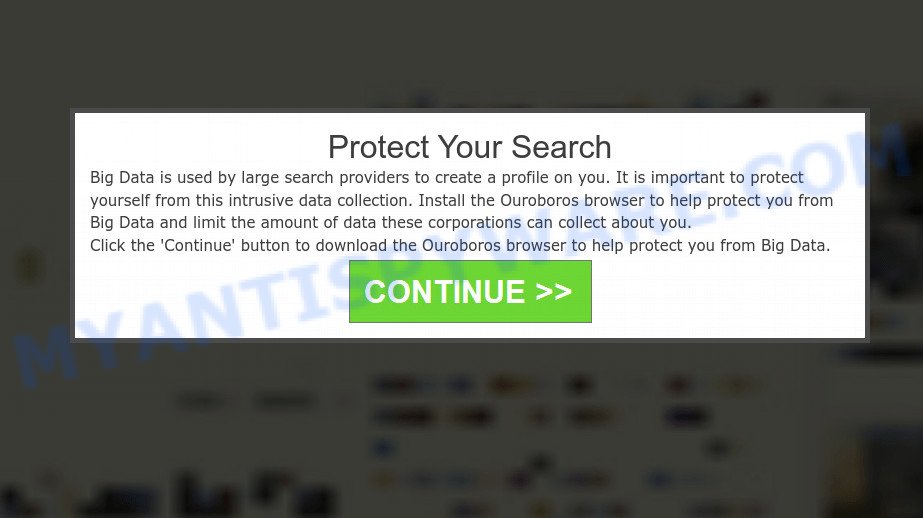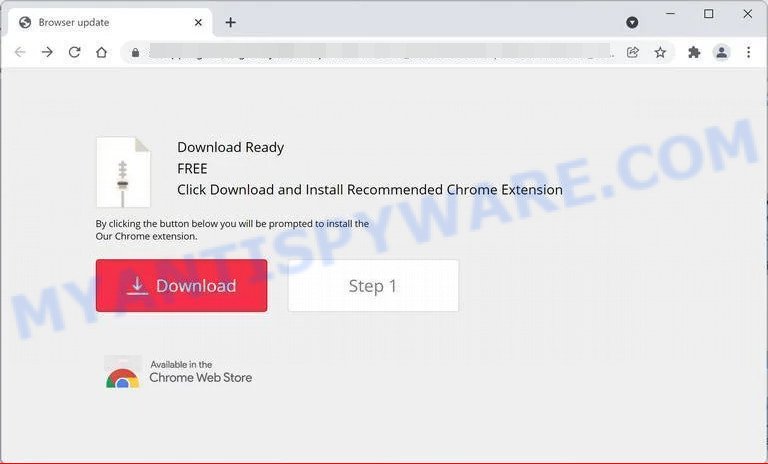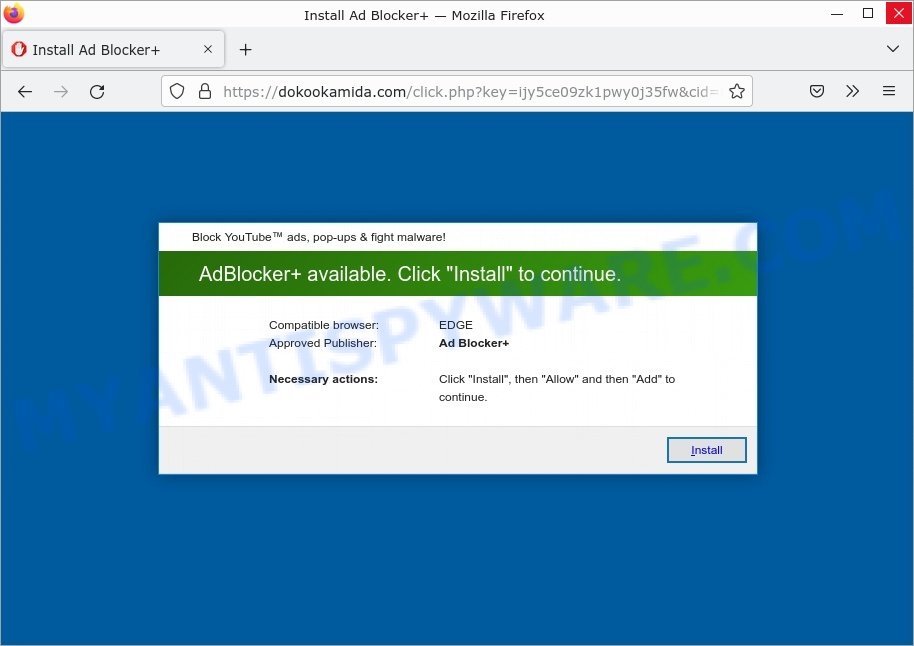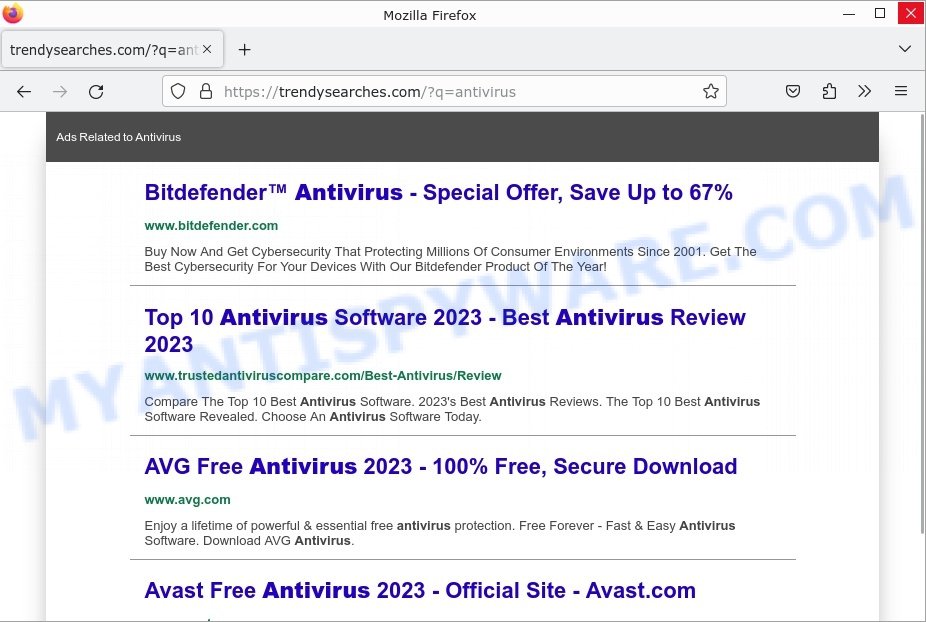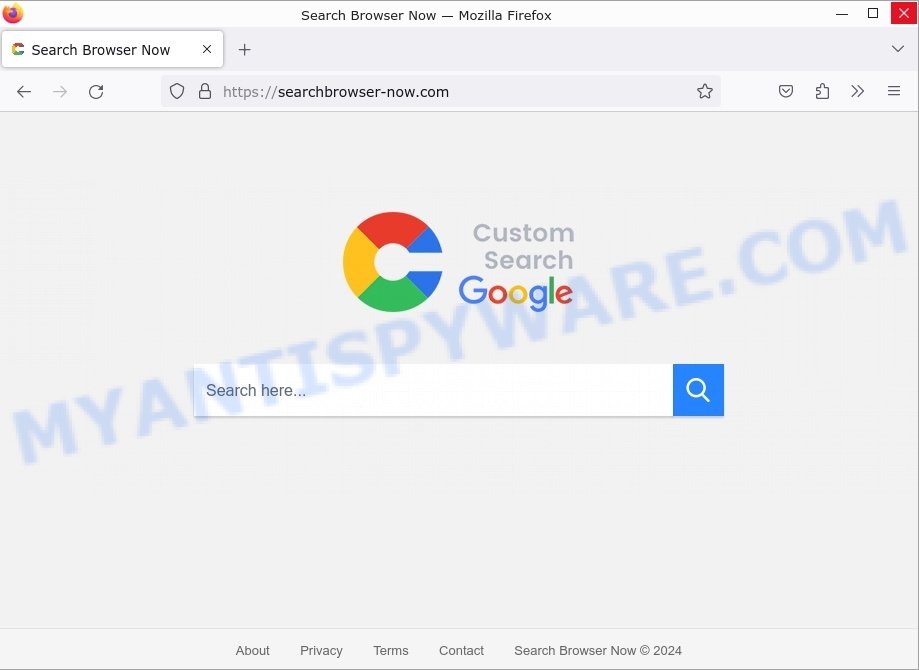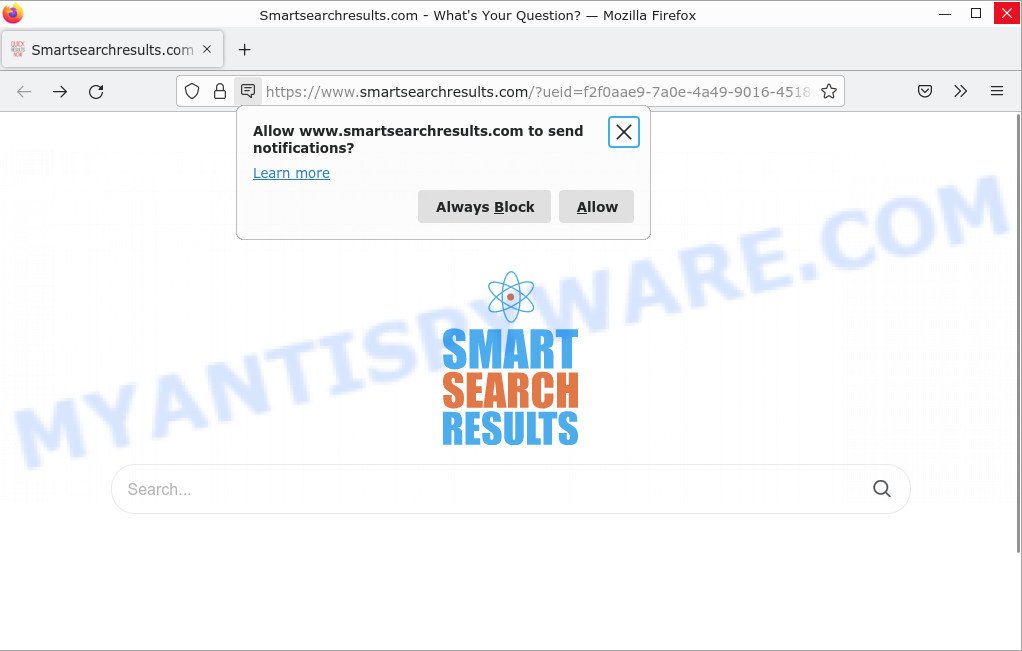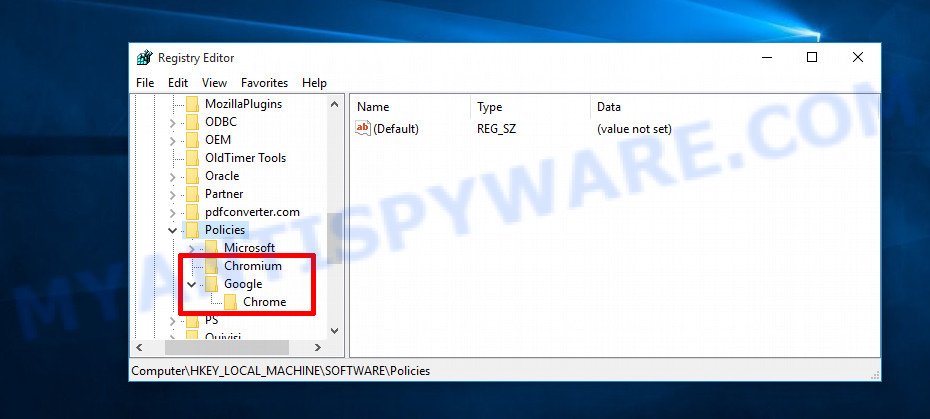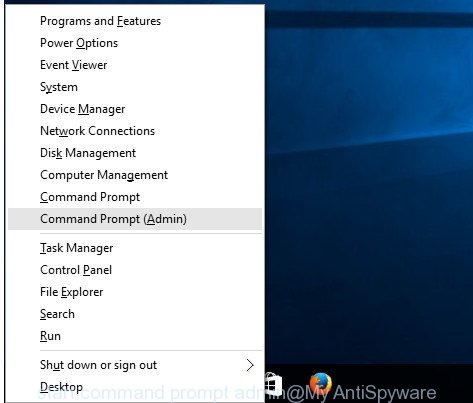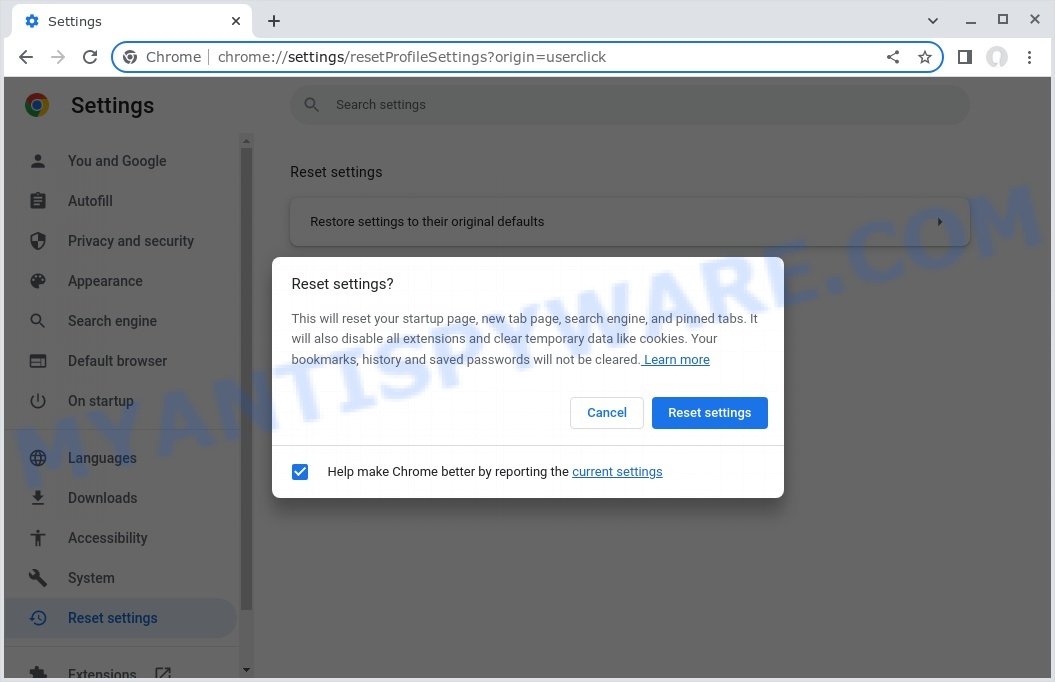⚠️ Our team has discovered Go.myquery.net, a fake search engine that forcibly redirects users’ search queries. This fake search engine is being promoted through malicious browser extensions that alters the default search engine settings on Chrome browsers. Once installed, it becomes the default search engine on users’ browsers, forcing them to use it for their searches. When users search for something, it can redirect them to various websites, including fake search engines, harmful or scam sites, and sometimes even legitimate search engines like Google and Bing.

Go.myquery.net is dangerous because it acts like a regular search engine but isn’t safe at all. Unlike real search engines, it can unexpectedly take you to different websites, which can be harmful. You should be careful with such surprises and always have good antivirus software on your device to keep it safe from browser hijackers and browser hijackeres.
If you have been experiencing unwanted redirects to Go.myquery.net while browsing the internet, it is crucial to take action to remove this browser hijacker from your system. Read on for a comprehensive guide on removing the Go.myquery.net browser hijacker.
Table of Contents
🚨 Is Go.myquery.net a Virus?
Yes, being redirected to “Go.myquery.net” is a sign that your is infected with a browser hijacker. This kind of software, known as a browser hijacker, takes over your web searches and sends you to places you didn’t intend to go, like “Go.myquery.net”. By controlling your browser, Go.myquery.net can redirect your searches to specific sites, collect sensitive information, and even insert or display unwanted ads. It may also send you to legitimate search engines like Google or Bing, using this method to appear more trustworthy and make money from clicks and advertising.
How Does This Happen? 🌐
Criminals employ a variety of cunning techniques to manipulate your browser and redirect your searches to Go.myquery.net. Here’s a closer look at some of the key methods they use:
- Replacing the Homepage: The hijacker alters your default homepage to a controlled page. Each time you launch your browser, you’re greeted by this altered page, which could further lead you to other malicious sites or generate ad revenue for the criminals.
- Malicious Extensions: Cybercriminals can introduce rogue extensions to your browser. These extensions can monitor and redirect your browsing activities, often without any visible signs, making them particularly insidious.
- Tampering with Legitimate Extensions: Sometimes, instead of adding a new extension, criminals might replace or modify a legitimate one you already trust and use. This can be harder to detect because you believe you’re using a trusted tool.
- Proxy Server or Browser Settings: By altering the settings of your system’s proxy server or browser, the hijacker can control and redirect all your internet traffic. This gives them a significant level of control over your online activities.
- Modifying System Settings: More advanced hijackers can change specific system settings of your computer. By altering DNS settings, for example, they can decide which servers your system communicates with when trying to access a website, effectively controlling your entire online experience.
- Blocking Restoration of Normal Settings: To ensure their changes aren’t easily undone, these hijackers often employ mechanisms to block or limit your ability to restore regular settings. They might disable certain settings within the browser, introduce additional software that counters any restoration attempts, or even modify system permissions to prevent changes.
🚩Here are some clear signs that you have the Go.myquery.net browser hijacker:
- You keep ending up on “Go.myquery.net” when you’re trying to go somewhere else in your browser.
- You find strange programs or files you don’t remember installing.
- You see tasks in your Task Manager with odd names.
- Your browser’s homepage or search engine changes without you doing anything.
- You notice a lot more pop-up ads than usual.
- You can’t seem to get rid of these unwanted programs or reverse the changes they’ve made.
- Your antivirus or anti-malware software starts giving you warnings about potential threats.
Ignoring these signs can make things worse, exposing you to even more ads, phishing scams, or other harmful content. The main goal of the Go.myquery.net browser hijacker is to use your computer for shady purposes, such as sending out spam or stealing personal information, which can seriously mess with your online safety and privacy.
To get rid of the Go.myquery.net browser hijacker, you’ll need to stop any related processes, delete the harmful programs and browser extensions, and reset your browser settings back to normal. Keeping your computer safe means regularly checking for viruses with trusted security software and being careful about what you download and where you browse online.
🚪 How Go.myquery.net Enters Your Computer
There are multiple ways the Go.myquery.net Redirect Virus can sneak onto your computer:
- Bundling: The browser hijacker can be packaged with other software, especially free or pirated versions. When users install the primary software, the hidden browser hijacker gets installed too.
- Fake Updates: Pop-ups or banners urging users to update software, especially popular ones like Flash Player, might be disguises for the hijacker.
- Malicious Attachments: Phishing emails with dubious attachments can introduce the browser hijacker when opened.
- Compromised Websites: Merely visiting a hacked or malicious website might initiate a background download of the browser hijacker.
Examples of Browser hijackers
Browser hijackers are a persistent and growing threat to computer security. They are often distributed through free software downloads, and once installed, they can cause a range of problems such as changing browser settings, redirecting search queries, displaying unwanted ads, and collecting personal data. The Go.myquery.net browser hijacker is just one example of such hijackers, and unfortunately, there are many more out there. X Finder Pro, Ysearcher.com, Trendysearches.com, and Searchmenow.gg are examples of other browser hijackers similar to Go.myquery.net browser hijacker that you should be aware of. By learning to recognize these threats, you can take steps to protect your computer and your privacy.
Threat Summary
| Name | Go.myquery.net |
| Type | Browser Hijacker, Redirect Virus |
| Primary Objective | Redirect users to “Go.myquery.net” when using search engines, likely to generate ad revenue. |
| Associated malware | ‘Managed by Your Organization’ malware |
| Common Symptoms | Unwanted redirects to “Go.myquery.net”, no visible changes like new toolbars in the browser. |
| Primary Infiltration Methods | Downloading from unreliable sources, including fake game downloads or pirated content. |
| Associated Risks | Potential for further malware infections, privacy risks, and data theft if keyloggers or spyware are also installed. |
| Primary Target | Affects multiple browsers, not limited to Google Chrome. |
| Removal | End related tasks in Task Manager, delete malicious files and applications, reset browser settings, and use reputable antivirus software for scanning and removal. |
How to Remove the Go.myquery.net Redirect from Windows (11, 10, 8, 7, XP) 🛠️🚀
If your Windows PC is redirecting you to Go.myquery.net or something else, it’s crucial to take immediate steps to remove this browser hijacker. This malware not only interferes with your web browsing but also poses a risk to your online security. Follow the straightforward steps below to eliminate the Go.myquery.net virus from your system and safeguard your digital environment.
To remove Go.myquery.net, perform the steps below:
- Uninstall Malicious Programs
- Fix Windows Policies to Remove Go.myquery.net
- Remove Go.myquery.net from Chrome
- Scan your computer for malware
Read this section to know how to manually remove the Go.myquery.net browser hijacker. Even if the step-by-step guide does not work for you, there are several free removers below which can easily handle such hijackers.
Uninstall Malicious Programs
Start by looking for any programs on your system that seem suspicious or you don’t remember installing. You can find these in the “Program Files (x86)” directory or through the Control Panel in the “Uninstall or change a program” section. If the program offers a “repair” option, you might need to use it before you can completely remove the software.
|
|
|
|
Fix Windows Policies to Remove the Go.myquery.net hijacker
Sometimes, removing a browser hijacker is difficult because of settings changed by the malware. You can fix this by updating the Windows Registry and modifying group policies. Here’s how:
- Open Windows Registry Editor:
- Press the Windows key (🪟) and “R” simultaneously. This will bring up the Run dialog box.
- Type “regedit” and hit Enter. The Windows Registry editor will now be visible.

- Navigate and Remove Malicious Registry Entries:
- Head over to “Computer\HKEY_LOCAL_MACHINE\SOFTWARE\Policies\”. Use this path as your guide.
- Identify and delete the folders named Chromium and Chrome which are associated with the “Managed by your organization” malware.
- Once done, exit the Windows Registry editor.

- Address Group Policy Folders:
- Hold the Windows key (🪟) and “X” together to open a quick-access menu.
- From the menu, choose Command prompt (Administrator). You’ll be presented with a command prompt window.

- Execute the Following Commands:
- Input
rd /S /Q "%WinDir%\System32\GroupPolicyUsers"and hit Enter. - Next, type
rd /S /Q "%WinDir%\System32\GroupPolicy"and press Enter. - Lastly, enter
gpupdate /forceand press Enter. If executed correctly, you’ll be greeted with messages indicating both the Computer Policy and User Policy have been updated successfully.

- Input
- Restart Your Computer:
- After executing the above steps, it’s crucial to restart your computer to ensure the changes take effect.
Remember, modifying the registry and group policies are advanced actions. Always proceed with caution and ensure you’re following the steps correctly.
Remove Go.myquery.net from Chrome
Having successfully fixed any restrictions that might have prevented the removal of unwanted extensions, it’s now time to tackle and eliminate Go.myquery.net from your Chrome browser.
- Access Chrome Extensions: Open your Google Chrome browser. Locate the three horizontal dots at the top-right corner (the Chrome menu button) and click it to reveal a drop-down. From this list, opt for ‘More Tools’ and subsequently select ‘Extensions’. Alternatively, quickly navigate by typing
chrome://extensionsinto Chrome’s address bar. - Inspect and Remove: Examine the list of installed extensions. Identify any unfamiliar or suspicious ones, or those you simply don’t need anymore. Click the “Remove” button beneath these extensions. A confirmation pop-up will appear; press “Remove” again.
- Reset Your Browser: To ensure no traces remain, consider resetting your browser settings. This action disables all extensions, clears cookies, and undoes unwanted changes but preserves your bookmarks and saved passwords. To do this:
- Revisit the Chrome main menu.
- Choose “Settings”.
- Find and select “Reset settings”.
- Click on “Restore settings to their original defaults”.
- Confirm by selecting the “Reset settings” button.

Note: If an unwanted extension remains despite these steps, consider using a trustworthy antivirus tool to scan your computer for any related malware or threats.
Scan your computer for malware
After you’ve tried to remove Go.myquery.net and reset your browser, there might still be hidden problems. Some bad files can stay hidden or look like normal ones. It’s always a good idea to do a full computer scan to catch these. This way, you can be sure everything harmful is gone. Let’s make sure your computer is clean and safe!
To fully ensure your computer’s safety, consider using MalwareBytes to automatically remove the Go.myquery.net browser hijacker. MalwareBytes is a trusted anti-malware tool with a strong track record. It’s been widely recognized for its efficiency in detecting and eliminating a broad range of threats, from sneaky browser extensions to more aggressive forms of malware. By employing advanced scanning techniques, MalwareBytes digs deep into your system, ensuring no malicious elements go unnoticed. Simply download, install, and run a full scan with MalwareBytes to clear out any lingering threats related to the Go.myquery.net or other potential risks.
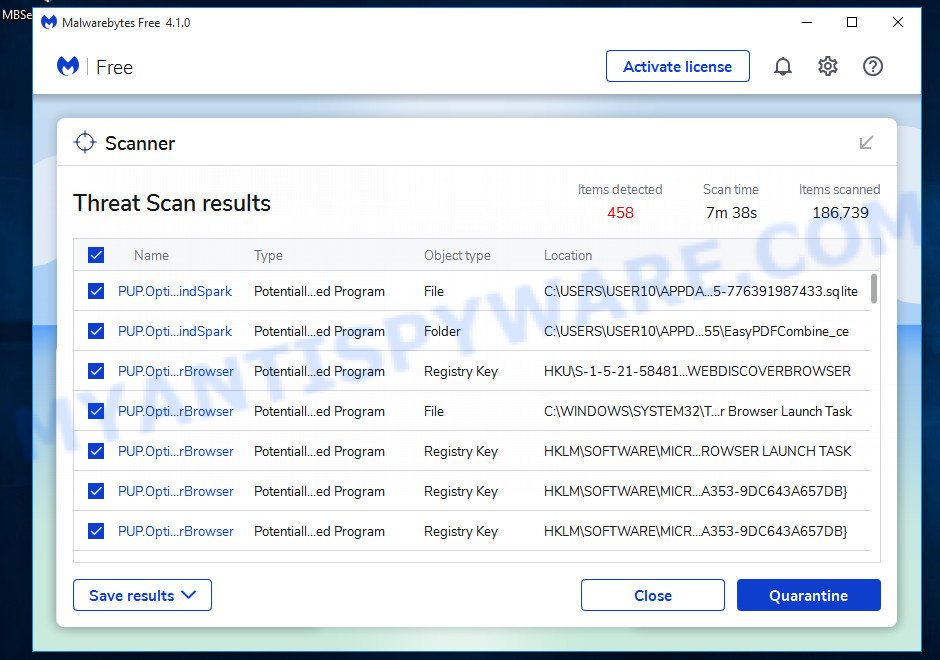
- Download Malwarebytes by clicking on the link below. Save it on your Windows desktop.
Malwarebytes Anti-malware
327311 downloads
Author: Malwarebytes
Category: Security tools
Update: April 15, 2020
- Once the download is done, close all applications and windows on your personal computer. Open a folder in which you saved it. Double-click on the icon that’s named MBsetup.
- Choose “Personal computer” option and press Install button. Follow the prompts.
- Once installation is finished, scan your computer. Run a full scan of your computer to detect and remove any browser hijackers and other forms of malware. The scan may take several minutes to complete, depending on the size of your hard drive and the speed of your computer.
- Remove detected threats. If the scan finds any threats, click Quarantine to remove them. The software will automatically remove the browser hijacker and any associated malware. After the removal process is complete, restart your computer to ensure that any changes made by the hijacker are fully removed.
The following video demonstrates how to remove hijackers, adware and other malware with MalwareBytes.
What to Do After Removing the hijacker 🤔✅
After successfully removing the Go.myquery.net hijacker from your computer, it is important to take some additional steps to ensure that your computer and personal information remain secure. Here are some recommended actions to take:
- It’s important to change your browser settings back to your preferred search engine and homepage. Make sure that Go.myquery.net is completely removed from your browser’s settings and that it cannot reappear.
- If you entered any sensitive information such as login credentials or passwords while the browser hijacker was active, change them immediately. This will prevent any potential identity theft or unauthorized access to your accounts.
- To remove any traces of the browser hijacker, clear your browser history and cache. This will help ensure that any data or information collected by the hijacker is removed from your system.
- Use a reputable anti-malware program like Malwarebytes to scan your computer for any remaining malware or potentially unwanted programs (PUPs). This can help ensure that there are no hidden threats or malicious files on your computer.
- Make sure that your browser and operating system are up-to-date with the latest security patches and updates. This can help prevent future security issues and keep your system protected.
- To avoid getting infected with similar malware in the future, be cautious of downloads and only download from reputable sources. Avoid clicking on suspicious links or downloading attachments from unknown sources.
Conclusion 📝👋
The Go.myquery.net hijacker mainly comes from harmful Chrome extensions and malicious programs. These bad apps look like normal or useful tools, but they actually cause unwanted changes in your browser. When you install them, they can change where your searches go, sending you to Go.myquery.net instead of your chosen search site. It’s important to be careful about what apps you install to your computer and where you download them from. Checking and cleaning your browser’s extensions regularly can help keep your online experience safe and normal.
Remember, removing the Go.myquery.net hijacker is just the first step. It’s important to remain vigilant and proactive in protecting yourself from similar threats that may emerge in the future. Stay informed, stay cautious, and enjoy a safer browsing experience!
